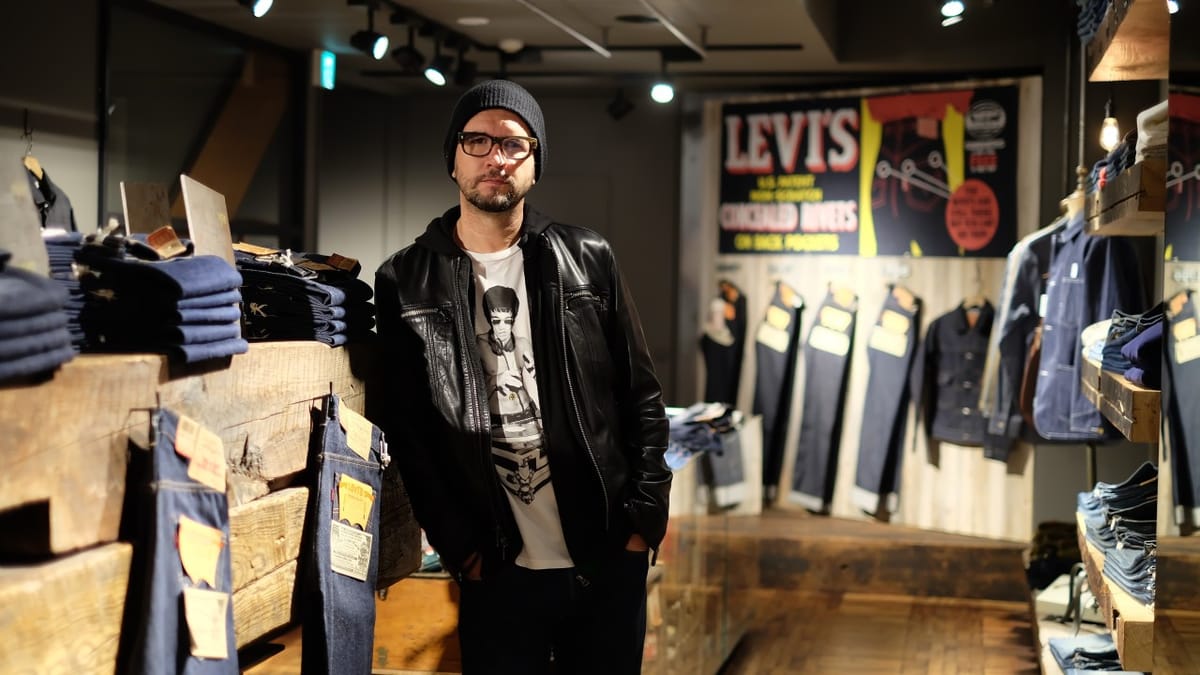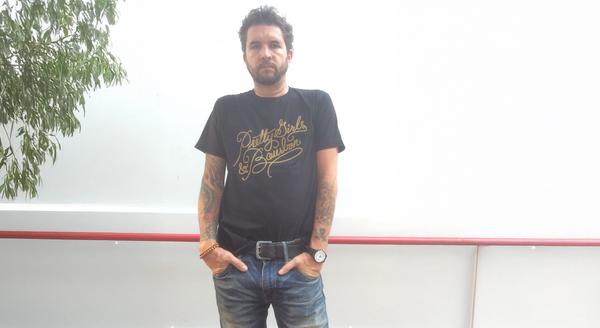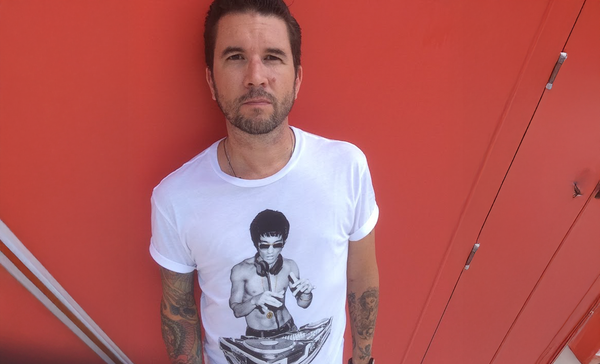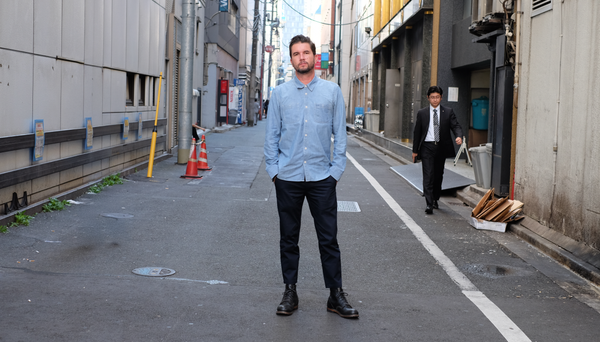Brief the Problem, Not the Solution.
Why most creative briefs fail to spark creativity and what to do about it.

One of the most exciting briefs I ever received, years ago, was from Levi’s Japan.
We want to raise awareness of the unmatched quality of Japanese denim, paired with the timeless heritage of Levi’s as an American icon.
A brief recently landed in my inbox that was quite different.
“We need a TikTok campaign that makes Gen Z fall in love with our products.”
That was the opening line. Not a single word yet about the audience, the tension, or the challenge the brand was trying to overcome. Just a pre-defined solution in search of a creative team to execute it. Complete with reference links to TikToks, followed by “sort of like this.”
The first call was a train wreck. They wanted a vendor, not a partner. I passed on this project, as it gave me no room to do what I do best: build solutions by first identifying the problem, not the channel.
Before we even think about channels or formats, we need to know what’s truly at stake. What’s broken? What needs to change? Who are we trying to move, and why haven’t they moved already? Those are the questions that lead to meaningful creative work.
And sadly, that’s not unusual.
If your briefs aren’t unlocking the work you need, let’s fix that together.
I train brand teams to write better briefs that actually spark creativity from their agencies. I step in and rework the briefs you’re struggling with so they’re clear, focused, and inspiring. If you’re an agency, I can help you answer even the most well‑intended but poorly written client briefs, turning constraints into breakthrough thinking.
And if your briefs don’t include the Epilogue Economy - the fastest‑growing audience with the most spending power - you’re missing a huge opportunity. I can help you weave this overlooked market into your strategy from the very start.
Schedule a meeting and lets talk about it.
Make Me a Partner, Not a Passenger
I love short, concise, to-the-point briefs. They do not have to be a full-blown unpacking of everything there is to know. That will come later. But it should be enough to let me know that there is a problem, here is what we believe are the issues, and here is the opportunity we are chasing.
Get me excited to solve this with you. Show me the starting point, how it ties to your OKRs, and how it might shift your market. Put me on the train with you, so I am not just waiting at the station for directions.
A good brief makes me feel like a partner in the journey, not just a ticket collector punching deliverables. It gives me enough context to understand where we’re headed and why it matters, while still leaving room for me to help figure out how we get there.
Because when you bring me into the problem, you get my best thinking. When you only hand me a solution, you get my compliance. And compliance doesn’t win hearts, move markets, or shift culture. And it bores the fuck out of me.
When Briefs Become Boxes (Raise your hand if you read Boxers)
Over the years, I’ve noticed that many briefs, especially the ones claiming to want “big ideas,” aren’t briefs at all. They’re wish lists. They start with execution, jump straight into tone, maybe toss in a few platform preferences, and then expect the magic to happen. They don’t give us a problem to solve.
They give us a box to decorate.
Somewhere along the way, the brief stopped being a thinking document and became a formatting request. Instead of being a space where strategy meets imagination, it’s turned into a set of pre-loaded instructions, narrowing the creative runway before anyone’s had a chance to take off.
And that’s a problem. Because a good brief is supposed to do something very specific.
It’s meant to make me want to solve something, with or for you.
It should articulate a real tension, a contradiction in the world, in the category, in the hearts and minds of people. It should capture the cultural moment or business reality we’re walking into. It should pose a question, not pre-package an answer.
But that’s not what most briefs do anymore.
Instead, they skip past the thinking and go straight to the ask:
- “We want a campaign.”
- “We need a 30-second video.”
- “It should be bold, but also safe. Funny, but not risky. Modern, but classic.”
It’s the creative equivalent of asking someone to surprise you with precisely what you already had in mind.
And the irony is, these prescriptive briefs usually come from a good place. The people writing them often feel pressure to show they’re being proactive, to get something made quickly, to signal confidence and decisiveness.
And worse, it treats creative teams like vendors, not partners.
When we’re handed a solution to execute instead of a problem to explore, our job becomes delivery, not discovery. There’s no space for insight, no room for surprise, and no real reason for creativity to show up. It’s just manufacturing with moodboards.
So what does a good brief look like?
It doesn’t have to be long. It doesn’t need to be clever. But it does need to do a few things really well.
It should make the business problem unmissable.
It should talk about the audience like they’re actual people, not just demographics or segments, but living, contradictory, emotional humans. It should acknowledge what’s been tried before and what didn’t work. And it should offer just enough structure to inspire action, but not so much that it prescribes the end result.
Most importantly, a good brief should pique my curiosity. It should spark the instinct to figure something out. That’s what lights my fuse.
When I’m working with teams or clients who are stuck in the brief development, I often suggest this simple shift:
Try writing the brief without referencing any specific format. No mention of “film” or “activation” or “campaign.” Just describe what’s broken. What’s shifting. What hasn’t changed but should.
Ask: What are we trying to make people feel, understand, or do differently? Why haven’t we done that already?
Because that’s where creativity lives, in the space between what is and what could be. That’s the tension we’re trying to resolve. That’s the space the brief should open up, not shut down.
You don’t hire creatives to color in the lines. You hire them to draw new maps.
Bringing It Into Practice: The “Brief the Problem” Module
This belief is the foundation of a module I teach in the Think First™ workshop series, called simply: Brief the Problem. It’s designed to tackle the exact issue we’ve been talking about—teams rushing to solutions without aligning on what’s actually broken.
In the session, we strip the brief down to its core. No formats, no deliverables, no “make it go viral.” We focus on the fundamentals:
- What’s the real business problem?
- Who are we trying to move and what’s in their way?
- What’s changed in the world that makes this moment different?
- What’s the one human truth we can leverage to create impact?
Participants are challenged to write a new brief without mentioning a single output. No videos, no activations, no campaigns. Just clarity about the tension that needs to be resolved.
It’s uncomfortable at first. Most teams are so conditioned to think in formats that removing that scaffolding feels like freefall. But that discomfort is precisely the point. When you let go of execution, you’re forced to get sharper on the audience and the problem.
The shift is immediate. Once the problem is clearly articulated, solutions emerge quickly and they’re better, because they’re anchored in something real. Teams begin to see how a strong brief doesn’t limit creativity; it liberates it.
This is why Think First™ exists. Because in a world obsessed with faster outputs and endless deliverables, taking the time to align on the problem is the most powerful creative multiplier we have.
If we want work that moves people, changes perception, and drives business, then we need to start by briefing the change we seek, not the content we assume.
Brief the problem, not the solution.
Brief the contradiction, not the conclusion.
And trust the process and the people enough to leave room for the unexpected. Because that’s where the good stuff lives, and that’s what a real creative brief is supposed to do.
So which do you prefer: boxes or briefs?

About RockPaperScissors
RockPaperScissors is a strategy and creative consultancy that helps brands and agencies solve complex problems and unlocks sharper thinking. We specialize in shaping better briefs, embedding AI into workflows, and connecting brands to the fastest‑growing audience segment: people in transition.
Through the lens of the Epilogue Economy, we also help you reach overlooked markets, especially older consumers and those navigating life and career shifts, because transitions are when people are most open to change.
Learn more at RockPaperScissors.



